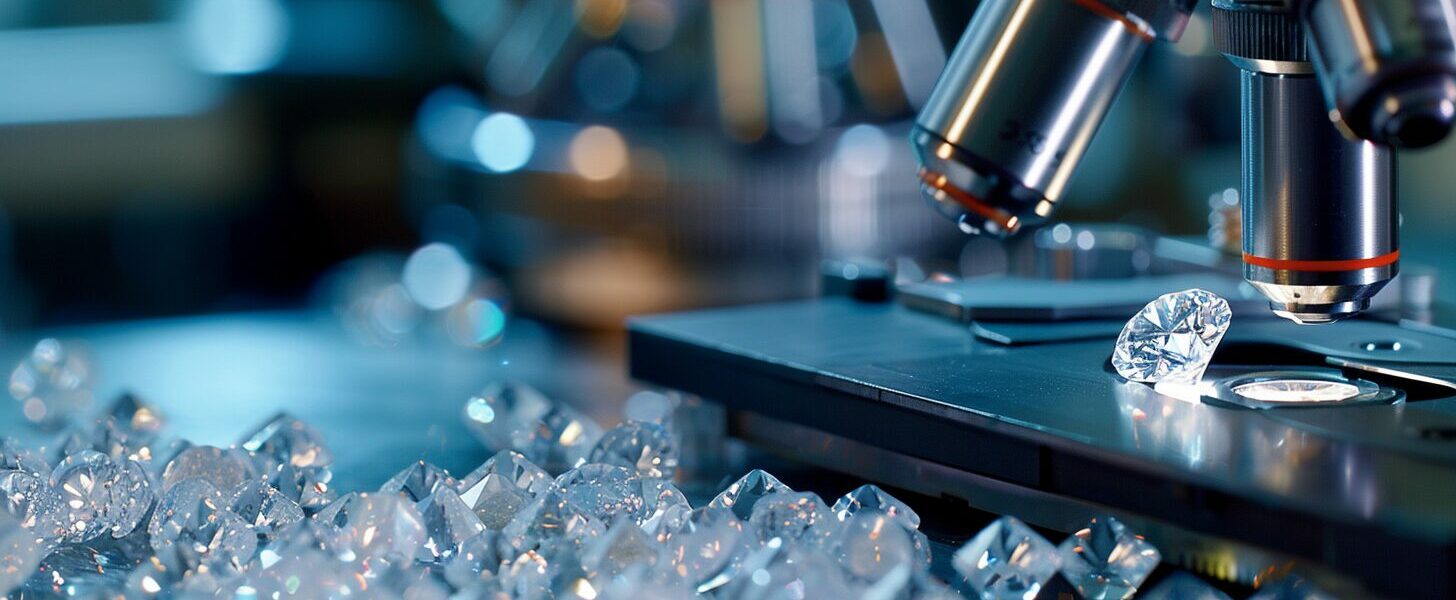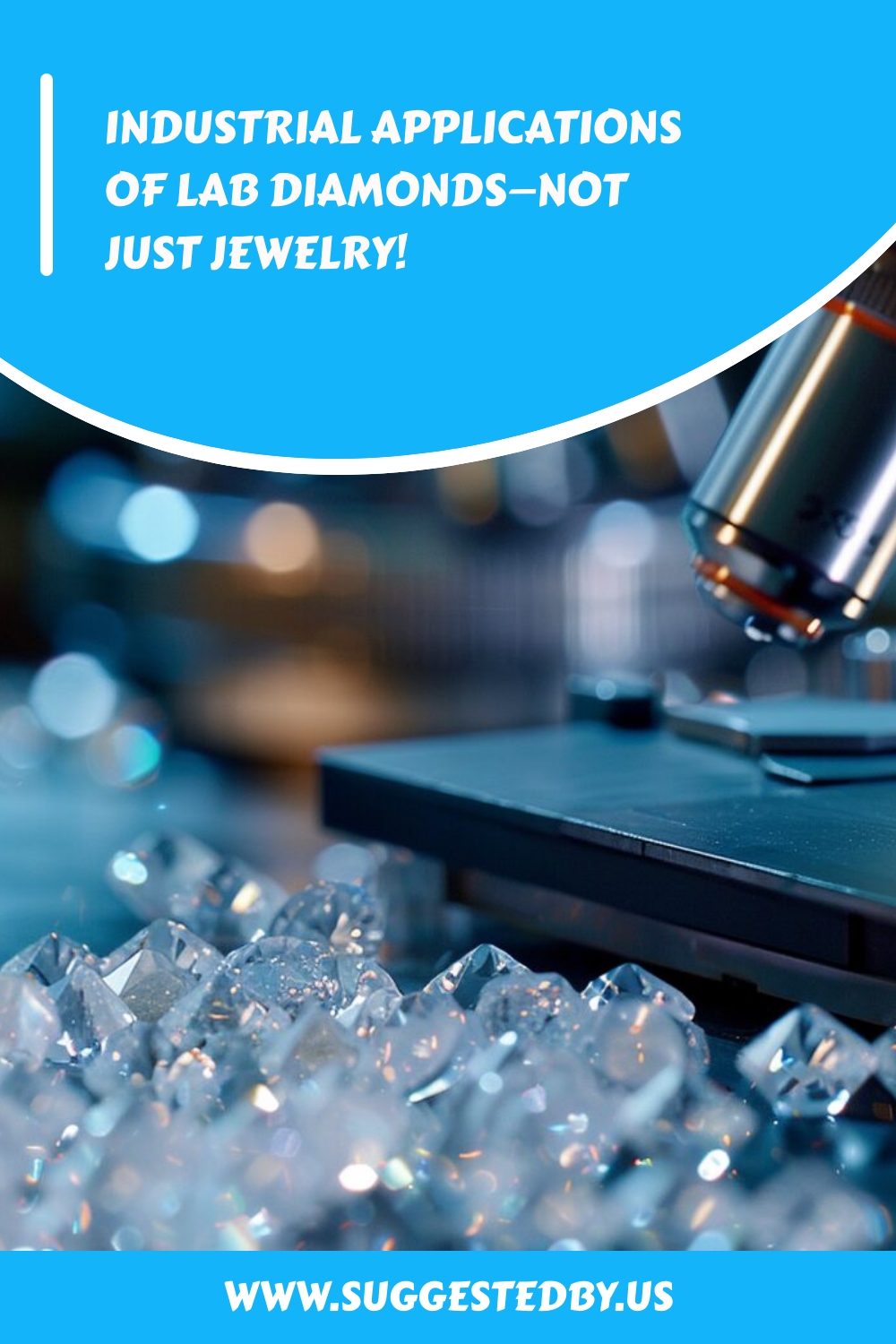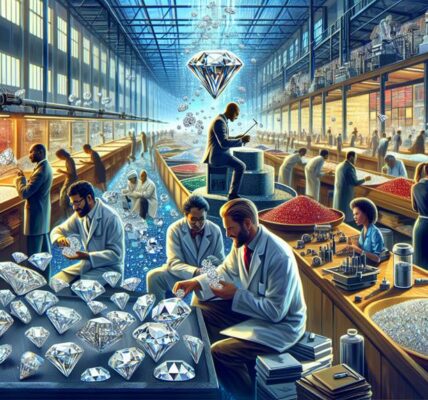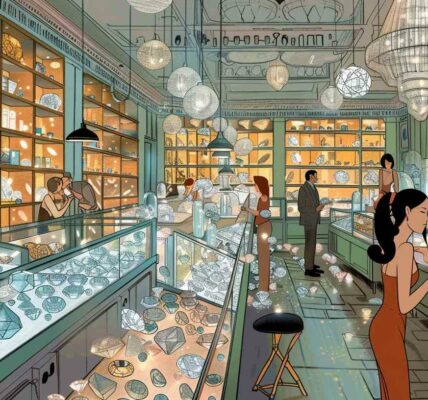Industrial Applications of Lab Diamonds: The burgeoning field of lab-grown diamonds represents a paradigm shift not only in the jewelry industry but also across a spectrum of industrial, scientific, and technological domains. These synthetic marvels, engineered with precision, are now pivotal in diverse applications, ranging from industrial-grade abrasives that streamline manufacturing processes to sophisticated components in electronic devices that demand unparalleled durability and thermal conductivity.
As we explore the multifaceted utility of lab-grown diamonds, it becomes evident that their impact extends far beyond their initial glittering allure, heralding a new era of innovation and sustainability. The question then arises: how will the continued evolution of these synthetic gems reshape industries and push the boundaries of scientific research?
Article Contents
- 1 Key Takeaways
- 2 Cutting and Polishing Uses
- 3 High-Pressure Experiments
- 4 Technological Innovations
- 5 Scientific Research Applications
- 6 Jewelry Beyond Tradition
- 7 Frequently Asked Questions
- 8 Our Thoughts About The Future of Industrial Applications of Lab Diamonds in Industry
- 9 Further Reading About Lab Diamonds in Industry
Key Takeaways
- Lab-grown diamonds revolutionize industrial manufacturing with enhanced cutting, polishing, and efficiency.
- Synthetic diamonds are crucial in high-pressure experiments, contributing to advancements in material science and geophysics.
- Their exceptional thermal conductivity drives technological innovations, particularly in electronics cooling and device miniaturization.
- Lab-grown diamonds offer ethical and environmental benefits over mined diamonds, including a reduced carbon footprint and conflict-free sourcing.
Cutting and Polishing Uses
In the domain of industrial manufacturing, lab-grown diamonds have revolutionized cutting and polishing processes by serving as cost-effective, abrasive granules for a wide range of applications. The integration of synthetic diamond abrasive granules into the manufacturing sector is a sign of the material’s adaptability and efficiency. These lab-grown diamonds, synthesized under controlled conditions, exhibit properties akin to natural diamonds, making them ideal for rigorous cutting and grinding tasks. Their unparalleled hardness and thermal conductivity allow for precision in shaping and finishing materials that range from metals to ceramics and even composite materials.
The adoption of lab-grown diamond granules has led to marked improvements in the efficiency and quality of industrial cutting and polishing operations. By providing a cost-effective alternative to naturally occurring diamonds, they enable industries to maintain high standards of production while managing operational costs effectively. This is particularly relevant in sectors where the precision and quality of the cut are paramount. Additionally, the consistent quality and supply of lab-grown diamonds guarantee that industries can rely on a steady influx of abrasive materials, avoiding the volatility often associated with the mining and distribution of natural diamonds.
High-Pressure Experiments
Building upon their role in industrial applications, lab-grown diamonds also play a pivotal function in facilitating high-pressure experiments with their unparalleled hardness and durability. In the domain of scientific research, these synthetic marvels are indispensable for creating conditions that simulate the extreme pressures found deep within the Earth or on other planetary bodies. The use of lab-grown diamonds in this situation underscores their critical role in advancing our understanding of material science, geophysics, and chemistry under high-pressure conditions.
Key points highlighting the importance of lab-grown diamonds in high-pressure experiments include:
- Exceptional Hardness and Durability: Their ability to withstand extreme pressures without deformation or breakage makes lab-grown diamonds ideal for generating high-pressure environments.
- Chemical Stability: Lab-grown diamonds maintain their chemical integrity even under extreme stress, ensuring that material degradation won’t affect the outcomes of experiments.
- Precise Control: The physical properties of lab-grown diamonds allow for the accurate manipulation of pressure levels, which is essential for the reproducibility and reliability of scientific experiments.
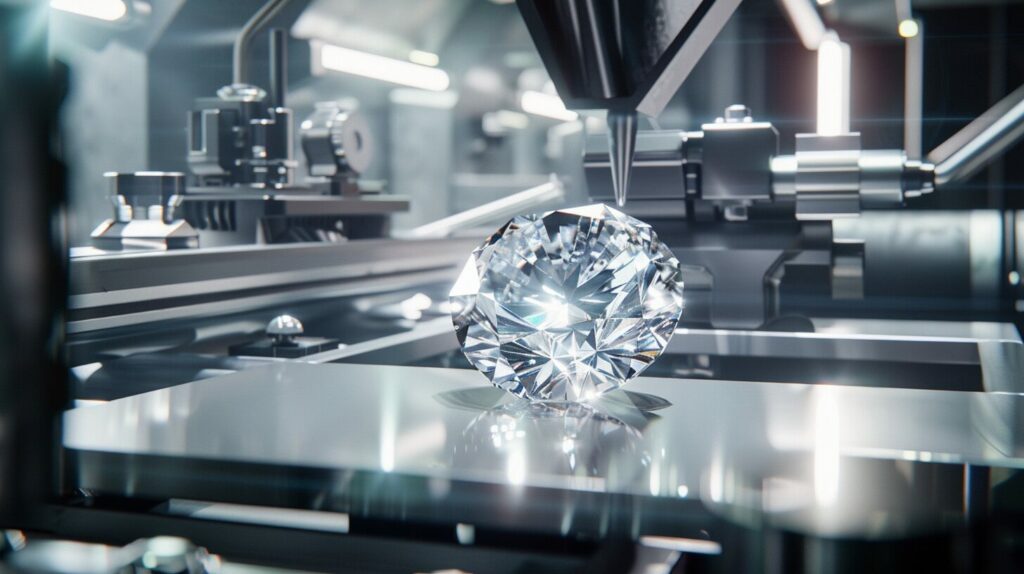
Technological Innovations
Lab-grown diamonds, with their exceptional thermal conductivity and stability, have emerged as pivotal components in the domain of technological innovations. These synthetic gems have transcended their ornamental value, becoming a cornerstone in developing advanced technological applications. Their superior thermal properties make them an ideal choice for enhancing the efficiency and durability of electronic devices, where managing heat is a critical concern.
Additionally, lab-grown diamonds are at the forefront of radiation detection applications, proof of their versatility and the technological advancements they enable. Their unique attributes not only contribute to the miniaturization of devices but also improve their performance and reliability in harsh environments.
| Application Area | Benefit |
|---|---|
| Electronic Devices | Enhanced thermal management |
| Radiation Detection | Improved sensitivity and stability |
| Advanced Technologies | Increased durability and efficiency |
| Heat Sinks | Superior thermal conductivity |
This table encapsulates the transformative role of lab-grown diamonds in technological innovations, illustrating their significance across various sectors. As research continues and their applications expand, lab-grown diamonds are poised to redefine the landscape of modern technology, underscoring their invaluable contribution beyond traditional uses.
Scientific Research Applications
Harnessing their unique properties, lab-grown diamonds have become indispensable in the area of scientific research, facilitating breakthroughs across various disciplines. The synthesis of these diamonds through methods like chemical vapor deposition has not only made them more accessible but also customizable for specific research needs. Their versatility and the benefits they offer are unparalleled, particularly in environments that demand the utmost precision and durability.
In scientific research, lab-grown diamonds are celebrated for their:
- High thermal conductivity: Essential for applications requiring rapid heat dissipation, such as in the development of high-power laser systems and electronic devices.
- Exceptional hardness and durability: Making them perfect for use in high-pressure experiments and as protective coatings for wear-resistant materials.
- Optical properties: Utilized in the creation of lenses, windows, and other components critical for high-performance optical systems.
The unique properties of lab-grown diamonds, combined with their versatility, make them a pivotal component in advancing scientific research. From enhancing the performance of electronic devices to enabling new discoveries in material science, the role of lab-grown diamonds in scientific innovation cannot be overstated. Their contribution extends beyond traditional applications, driving progress in ways previously unimagined.
Jewelry Beyond Tradition

While scientific research has greatly benefited from the unique properties of lab-grown diamonds, their application in modern jewelry is redefining traditional aesthetics and ethical standards. The jewelry industry, historically reliant on mined diamonds, is witnessing a paradigm shift with lab-grown diamonds at the forefront. These diamonds, identical in chemical and physical properties to their mined counterparts, offer innovative designs and colors that expand creative possibilities, pushing the boundaries of traditional jewelry.
Lab-grown diamonds are not only customizable, allowing for unique and personalized pieces, but also sustainable and ethical, addressing concerns about the environmental and ethical issues associated with traditional diamond mining. This aspect is increasingly important to consumers who seek transparency and responsibility in their purchases. The jewelry industry is responding by incorporating lab-grown diamonds into their collections, highlighting their versatility and eco-friendly appeal.
Additionally, the quality of lab-grown diamonds, coupled with their affordability, makes them an attractive option for both traditional and contemporary designs. This accessibility is transforming the industry, making high-quality diamonds available to a broader audience. Lab-grown diamonds represent a significant shift towards more sustainable, ethical, and innovative practices in the jewelry domain.
Frequently Asked Questions
What Are the Applications of Lab-Grown Diamonds?
Lab-grown diamonds serve a multitude of applications beyond their aesthetic function in jewelry. These synthetic gems are employed as abrasive materials for cutting and polishing, enhancing efficiency in multiple industries. They are pivotal in the production of diamond anvils for high-pressure research, and their exceptional thermal properties make them ideal for use in electronic heat sinks and wear-resistant coatings.
Additionally, their application in scientific advancements, such as neutron diffraction and X-ray optics, underscores their versatile utility.
What Are the Industrial Uses of Lab-Grown Diamonds?
Due to their unparalleled hardness and durability, lab-grown diamonds are essential in various industrial applications. They are prominently used for cutting, grinding, and polishing with abrasive granules, providing cost-effective alternatives to natural diamonds.
Additionally, these synthetic diamonds are crucial in producing diamond anvils for high-pressure experiments, advanced technologies like heat sinks, wear-resistant coatings, and in scientific research, including neutron diffraction and diamond X-ray optics.
What Is the Environmental Impact of Lab-Grown Diamonds?
The environmental impact of lab-grown diamonds is markedly lower than that of mined diamonds. These diamonds are produced in controlled laboratory settings, which minimizes ecological disturbances and avoids the extensive land and water usage associated with traditional diamond mining.
The sustainable production processes of lab-grown diamonds adhere to strict ethical and environmental standards, offering a greener alternative that contributes to environmental protection by circumventing the destructive practices of conventional diamond extraction.
What Are the Ethical Benefits of Lab-Grown Diamonds?
The ethical benefits of lab-grown diamonds are substantial, addressing critical concerns in the diamond industry. By being cultivated in controlled environments, they circumvent the environmental degradation and unethical labor practices associated with traditional mining.
Their traceable origins contribute to ethical sourcing, ensuring responsible practices throughout the production process. Consequently, consumers can confidently select these diamonds in their conflict-free status, supporting sustainable and ethical choices in their purchases.
Our Thoughts About The Future of Industrial Applications of Lab Diamonds in Industry
To sum up, lab-grown diamonds exhibit an exceptional range of applications across various sectors, reflecting their immense utility and versatility. From enhancing efficiency in cutting and polishing processes in industrial manufacturing to enabling high-pressure experiments in material science, these synthetic gems play a pivotal role.
Additionally, their contribution to technological innovations, through the development of heat sinks and wear-resistant coatings, along with their use in scientific research, underscores their significance. Consequently, lab-grown diamonds represent a sustainable and innovative solution, transcending their traditional use in jewelry and marking a significant advancement in modern technology and industry.
The evolving landscape of lab-grown diamonds signifies a monumental shift towards sustainable and ethical manufacturing across industries far beyond jewelry. Their application in enhancing industrial processes, advancing scientific research, and fueling technological innovations presents a future where lab-grown diamonds are pivotal to sustainable practices and technological breakthroughs.
As we look ahead, integrating these diamonds in diverse sectors promotes environmental responsibility and heralds a new era of efficiency and innovation.
Further Reading About Lab Diamonds in Industry
1: Industrial Applications and Advantages of Lab-created Diamonds
2: Not Just Jewelery, The Many Applications of Lab-Grown Diamonds
3: Applications of Lab-grown Diamonds in Electronics
4: Experts Explain How Diamonds Are Made in A Laboratory
5: What Are Lab-grown Diamonds?
